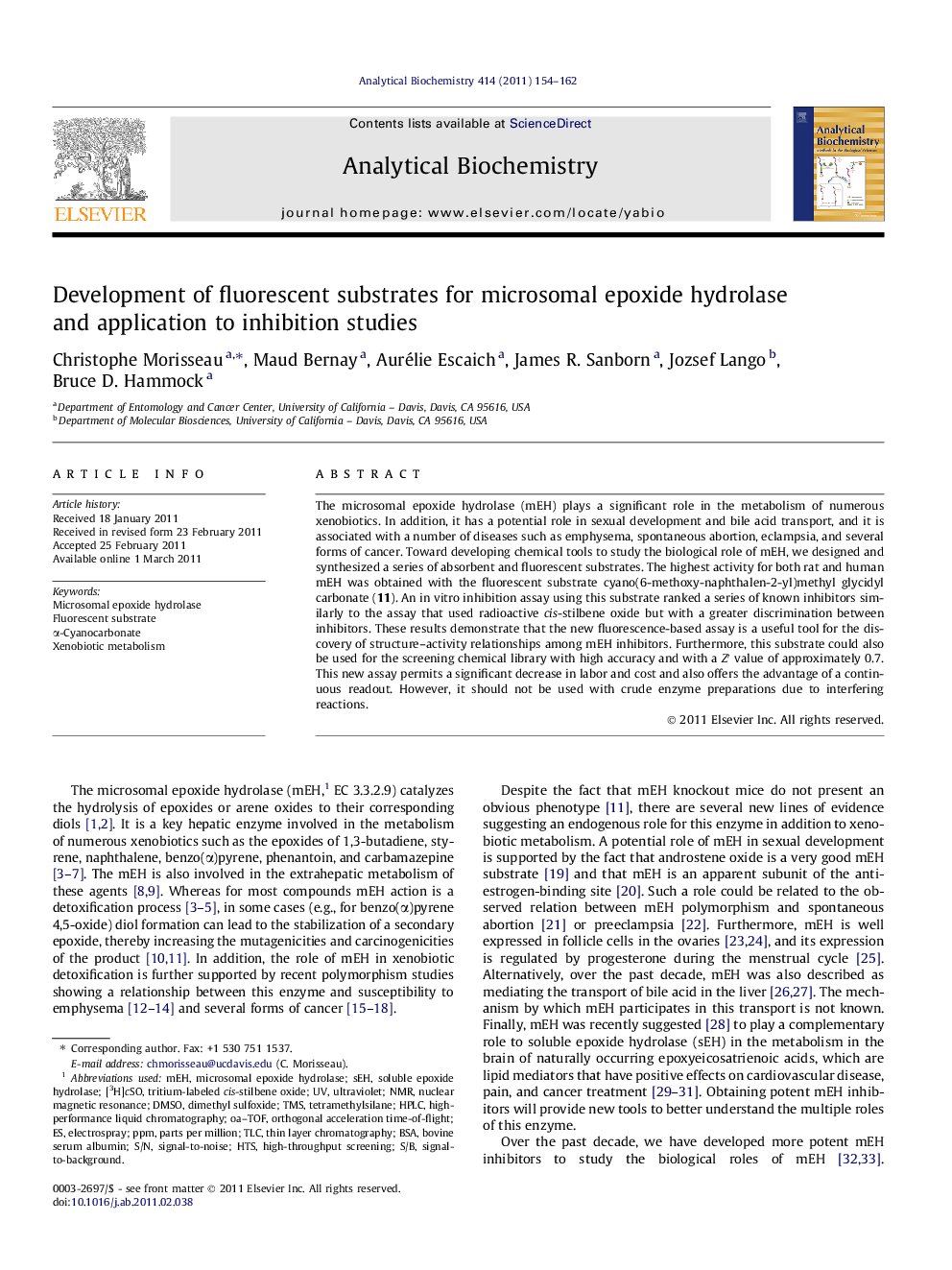| Article ID | Journal | Published Year | Pages | File Type |
|---|---|---|---|---|
| 1176936 | Analytical Biochemistry | 2011 | 9 Pages |
The microsomal epoxide hydrolase (mEH) plays a significant role in the metabolism of numerous xenobiotics. In addition, it has a potential role in sexual development and bile acid transport, and it is associated with a number of diseases such as emphysema, spontaneous abortion, eclampsia, and several forms of cancer. Toward developing chemical tools to study the biological role of mEH, we designed and synthesized a series of absorbent and fluorescent substrates. The highest activity for both rat and human mEH was obtained with the fluorescent substrate cyano(6-methoxy-naphthalen-2-yl)methyl glycidyl carbonate (11). An in vitro inhibition assay using this substrate ranked a series of known inhibitors similarly to the assay that used radioactive cis-stilbene oxide but with a greater discrimination between inhibitors. These results demonstrate that the new fluorescence-based assay is a useful tool for the discovery of structure–activity relationships among mEH inhibitors. Furthermore, this substrate could also be used for the screening chemical library with high accuracy and with a Z′ value of approximately 0.7. This new assay permits a significant decrease in labor and cost and also offers the advantage of a continuous readout. However, it should not be used with crude enzyme preparations due to interfering reactions.
